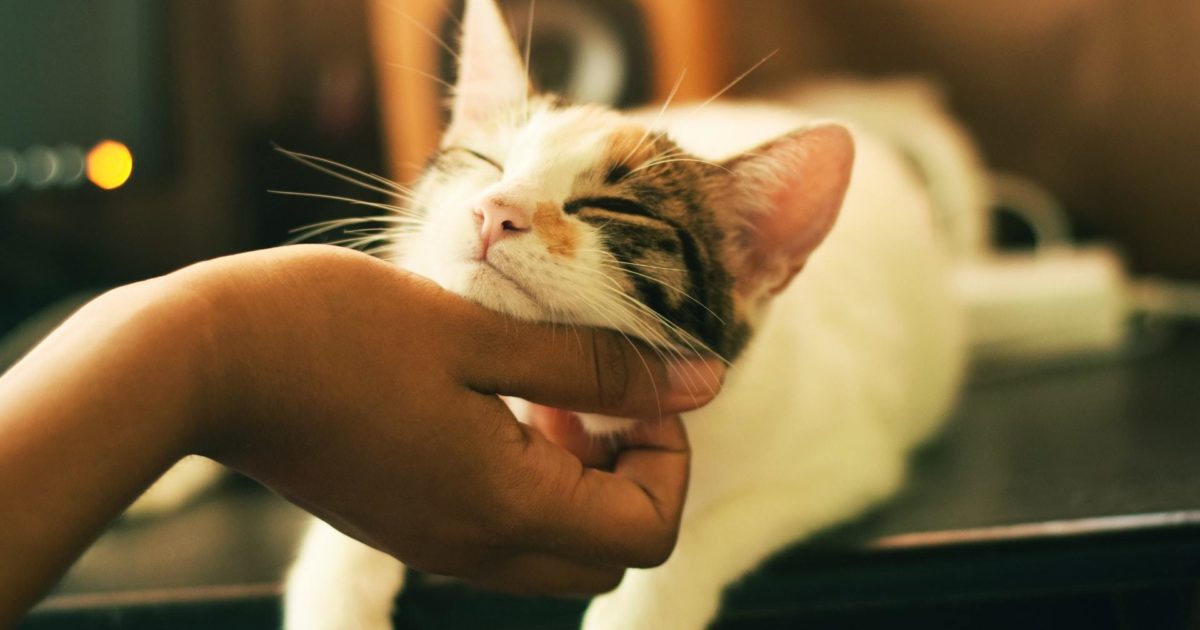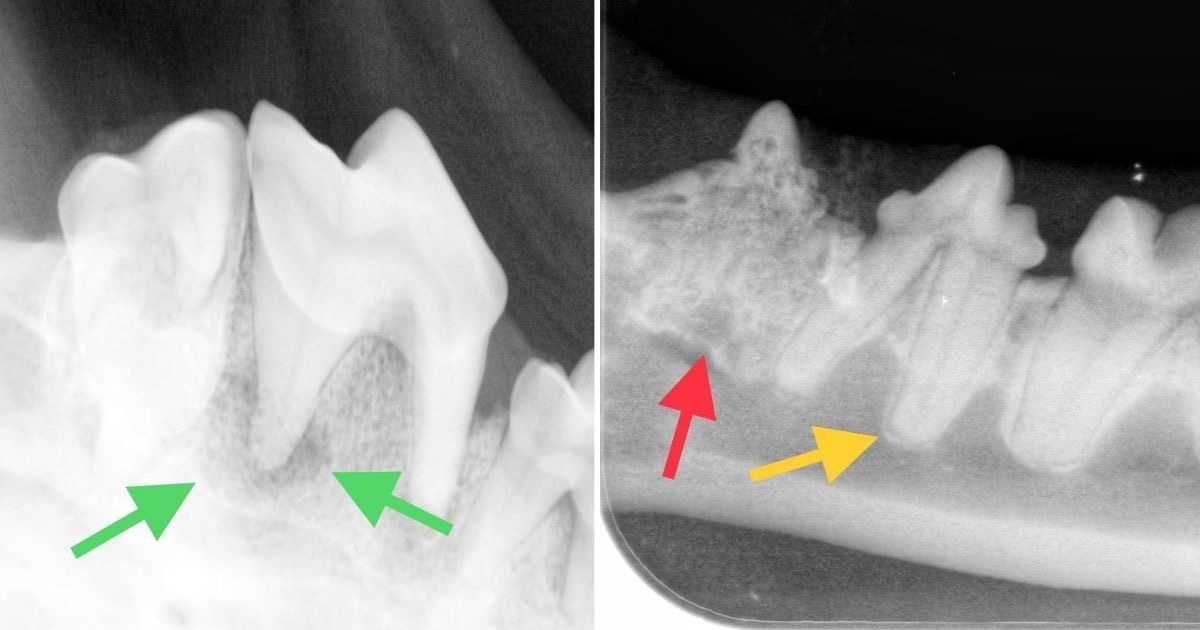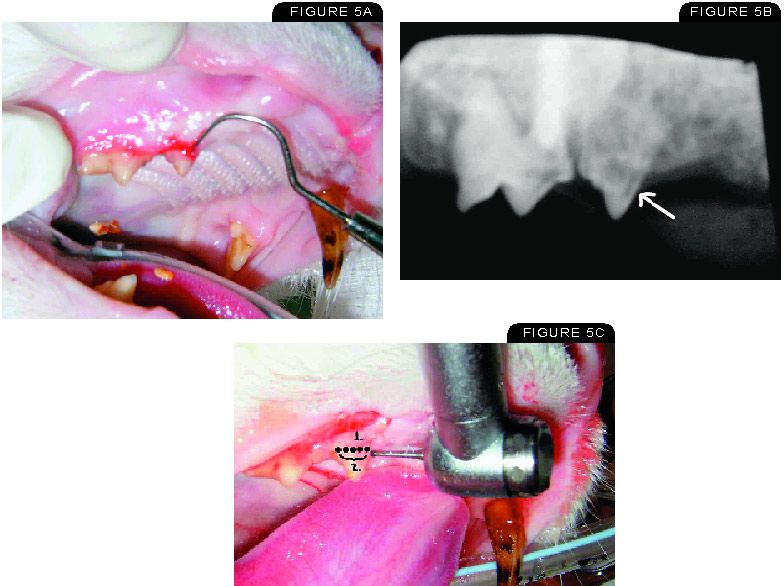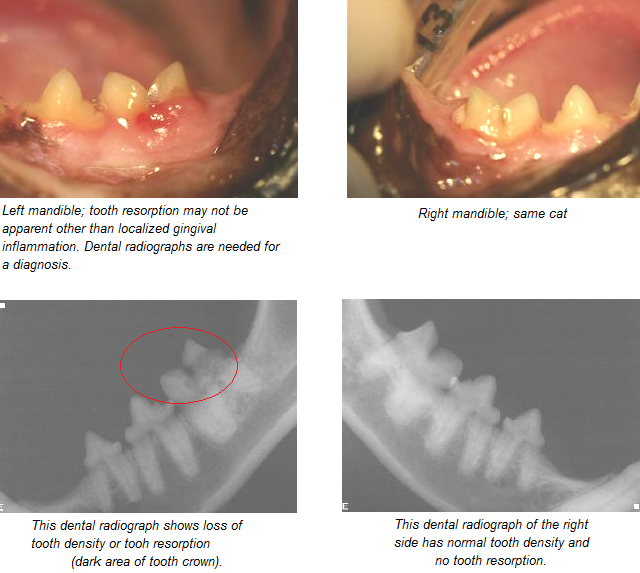tooth resorption cats prognosis
The exact cause for tooth resorption is not known but studies suggest that the presence of vitamin D in excessive quantities in packaged cat food may be the reason. The resorption is usually progressive but even extensive cases can sometimes be reversed.
Drooling Having difficulty chewing Dropping food while chewing Chattering the.

. In the second stage the lesions become larger but have not spread beyond the dentin. This painful dental condition affects up to 60 of adult and senior cats but its symptoms can be difficult to recognize with the untrained eye. Tooth resorption is progressive and may be singular or multiple and on the lingual side where the tongue is or buccal side where the cheek is side of the tooth.
They start as small erosions in the dental enamel and progress both in size and depth. Feline tooth resorption usually has five stages. This diet should be high in calcium phosphorus potassium and magnesium but low in vitamin D.
Pain can lead to behavioral changes and lethargy in cats which can severely affect their quality of life. Feline TR is a very common problem. Cats who have suffered from tooth resorption often will develop the condition again in other teeth.
FORL is a dental disease in which the tooth and its roots dissolve. As the disease progresses the symptoms your cat may show include difficulty in eating dribbling saliva face rubbing jaw chattering and weight loss. Sometimes the entire crown of the tooth may be missing.
TR occurs when cells called odontoclasts destroy the tooth root surfaces by causing the enamel to be resorbed. In the meantime this disease is often just referred to as RL resorptive lesions. Deep erosion and severe lesions happen in.
Over time all parts of affected teeth become involved and worn down. If left untreated this disease can result in other oral problems pain infections and. Historically called feline odontoclastic resorptive lesions FORL cervical line lesions neck lesions feline caries cervical line erosions or feline cavities the current term according to the American Veterinary Dental College is tooth resorption TR.
If you suspect your cat may be dealing with tooth resorption the best thing you can do for them is take them to a vet right away. Almost every third cat. Three out of every four cats over the age of five are affected by tooth resorption.
Tooth resorption in cats unfortunately often goes undiagnosed. 12 Risk factors include increasing age and the presence of other dental disease including additional TR lesions. Tooth resorption is common in the domestic cat and the incidence has been reported to increase with increasing age.
Tooth Resorption in Cats. It is one of the most common and most painful diseases in cats. All types of teeth in the feline dentition may be affected but lesions seem to be more common in certain teeth.
If cat tooth resorption is left untreated for a period of time the crown can break and cause tooth loss. Dropping food from the mouth. Veterinarians recognize two main types of feline tooth resorption.
More than 50 of cats over 3 years of age will be affected by TR. However once a significant amount of erosion of the tooth develops and is visible the condition will usually then result in pain. Tooth resorption can be difficult to detect with cats often masking signs of oral discomfort or pain.
Feline tooth resorption lesions are one of the top causes of tooth loss in cats. Over time all areas of an affected tooth may become involved and tooth resorption is very painful for your cat. Incidence reports list a range from 30 to 60 for cats affected by this oral condition.
Various studies have found 28-67 of cats have tooth resorption and it is the most common cause of tooth loss in the cat. Full mouth veterinary dental radiographs are needed for both diagnosis and treatment. Symptoms of Tooth Resorption in Cats.
Once the sensitive dentin is exposed tooth resorption is painful and manifests as muscular spasms or trembling of the jaw whenever the lesion is touched. There should be no filler foods in the ingredients. The lesions are small and close to the base of the tooth.
How is Tooth Resorption. It affects the crown of the tooth to expose the nerve and dentin resulting in pain and inflammation. After an occurrence of tooth resorption have your cats dental health assessed at least twice a year.
Gingivitis appears as a bright red section of the gums Vomiting. Type 2 resorption affects both the crown and the roots with bone slowly replacing the. 12 hours agoFORL stands for Feline Odontoclastic-Resorptive Lesions and is a degenerative disease of the teeth in cats.
This condition most commonly occurs in feline patients. Cats with clinically missing teeth have also been found to be more likely to have tooth resorption. 3 Dental radiographs are required for proper diagnosis and treatmentFeline tooth resorption TR a common disease in cats characterized.
Stage one is the earliest stage of damage. Periodontal disease oral neoplasia particularly squamous cell carcinoma feline stomatitis and tooth resorption. If your cat has tooth resorption she may show increased salivation oral bleeding or difficulty eating.
Tooth resorption TR occurs when the hard tissue under the tooth enamel called dentin wears down and is eventually destroyed. In feline tooth resorption the enamel and dentin of affected teeth slowly get consumed by the body. Type 1 tooth resorption involves destruction of the crown but spares the roots of a tooth.
Root canal therapy may help treat internal resorption but if there is a large defect the tooth may break apart and fail to function. If so you may have witnessed a case of feline tooth resorption. Your vet may also suggest using wet food if your cat has had more than one extraction to prevent discomfort in eating.
Tooth resorption can also present issues because of the pain it causes. For this reason cats dont always get the care they need to relieve their pain and prevent further dental damage. It goes without saying that dental care for.
A second opinion may be necessary. You may want to switch to a brand that is low in vitamin D. Symptoms of tooth resorption in cats can range from.
External resorption can be misdiagnosed. Oral disease in cats comprises four major conditions. This led to the hypothesis that given enough time all teeth of affected cats will develop tooth.
Tooth resorption in cats unfortunately often goes undiagnosed. Initially cats with affected teeth may not show any symptoms at all. In many cases without radiographic and clinical screening in an anesthetized cat.
Chewing with only one side of the mouth.

Juvenile Gingivitis Periodontitis Advanced Animal Dentistry
Tooth Resorption In Dogs And Cats Vetbloom Blog

Tooth Resorption In Cats Unfortunately Often Goes Undiagnosed
Tooth Resorption In Dogs And Cats Vetbloom Blog

Feline Tooth Resorption Today S Veterinary Practice

Feline Tooth Resorption Today S Veterinary Practice

Feline Tooth Resorption How To Help Your Cat Firstvet

Dog Cat Tooth Extractions When To Remove Walkerville Vet

Dental Corner How To Detect And Treat Feline Odontoclastic Resorptive Lesions
Tooth Resorption In Dogs And Cats Vetbloom Blog
Tooth Resorption In Dogs And Cats Vetbloom Blog

External Tooth Resorption In Cats Part 2 Therapeutic Approaches Today S Veterinary Practice

Feline Tooth Resorption Today S Veterinary Practice

Resorptive Lesions Feline Healthy Paws Animal Hospital

External Tooth Resorption In Cats Part 2 Therapeutic Approaches Today S Veterinary Practice

External Tooth Resorption In Cats Part 2 Therapeutic Approaches Today S Veterinary Practice
Tooth Resorption In Dogs And Cats Vetbloom Blog

Risk Assessment Of Feline Tooth Resorption A Portuguese Clinical Case Control Study Semantic Scholar